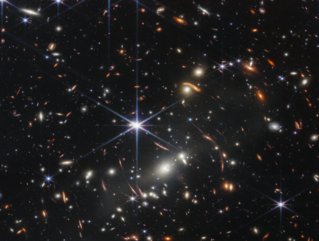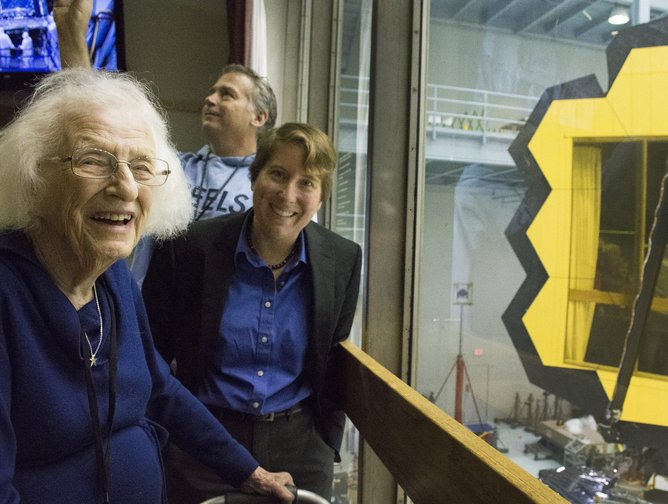Meet the woman behind the James Webb Space Telescope

By now, you’ve probably been inundated with images of galaxy cluster SMACS 0723, produced by NASA’s James Webb Space Telescope. But behind every great telescope, there is a woman – in this case, it’s Dr. Jane Rigby.
Why is the James Webb Space Telescope so important?
James Webb Space Telescope, or ‘Webb’ for short, is a hundred times more powerful than existing observatories. So much so that it has delivered the sharpest and deepest infrared image of the distant universe, and shows thousands of galaxies which have never before been observed in the infrared.
Webb’s recently-produced image shows galaxy cluster SMACS 0723 as it appeared 4.6 billion years ago.
“Webb’s image is approximately the size of a grain of sand held at arm’s length, a tiny sliver of the vast universe,” NASA explains. “The combined mass of this galaxy cluster acts as a gravitational lens, magnifying more distant galaxies, including some seen when the universe was less than a billion years old.
“This deep field, taken by Webb’s Near-Infrared Camera (NIRCam), is a composite made from images at different wavelengths, totaling 12.5 hours – achieving depths at infrared wavelengths beyond the Hubble Space Telescope’s deepest fields, which took weeks. And this is only the beginning.”

Who is Jane Rigby?
Dr. Jane Rigby is an Astrophysicist in the Observational Cosmology Lab at NASA's Goddard Space Flight Center in Maryland, US, and serves as the Project Scientist for Operations for the James Webb Space Telescope.
On Christmas Day 2021, when Webb was launched, Jane and her colleagues started working to prepare the observatory to deliver breakthrough discoveries about the universe’s first galaxies.
Jane is particularly interested in how galaxies have evolved over time, with a focus on the growth of black holes in the centre of galaxies. To gain a greater insight to these topics, Jane uses gravitational lensing, which allows her to exploit rare, natural telescopes to magnify galaxies, by making them much brighter and more stretched out.
Gravitational lensing gives current telescopes a much crisper view of galaxies, which demonstrates the potential capabilities of future telescopes, such as the James Webb Science Telescope.
Clearly, Jane is passionate for space and enjoys sharing her enthusiasm with the public, as she’s spoken in front of many audiences, including at the Huntington Library in Pasadena, Ca. and TEDxMidAtlantic in Washington, DC.
Jane holds MS and PhD degrees in Astronomy from the University of Arizona, a BS degree in Physics, and a BS degree in Astronomy from Penn State University.






